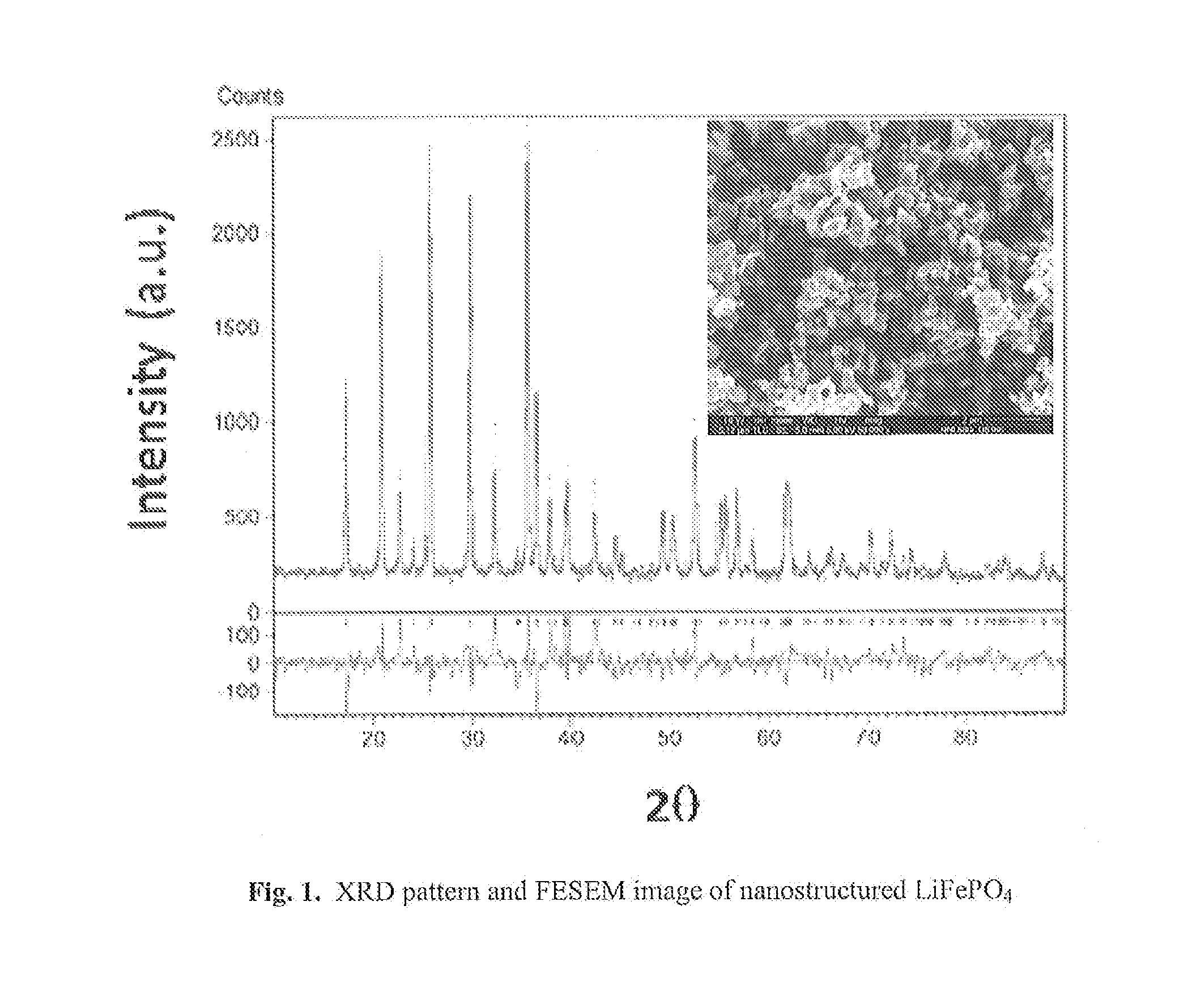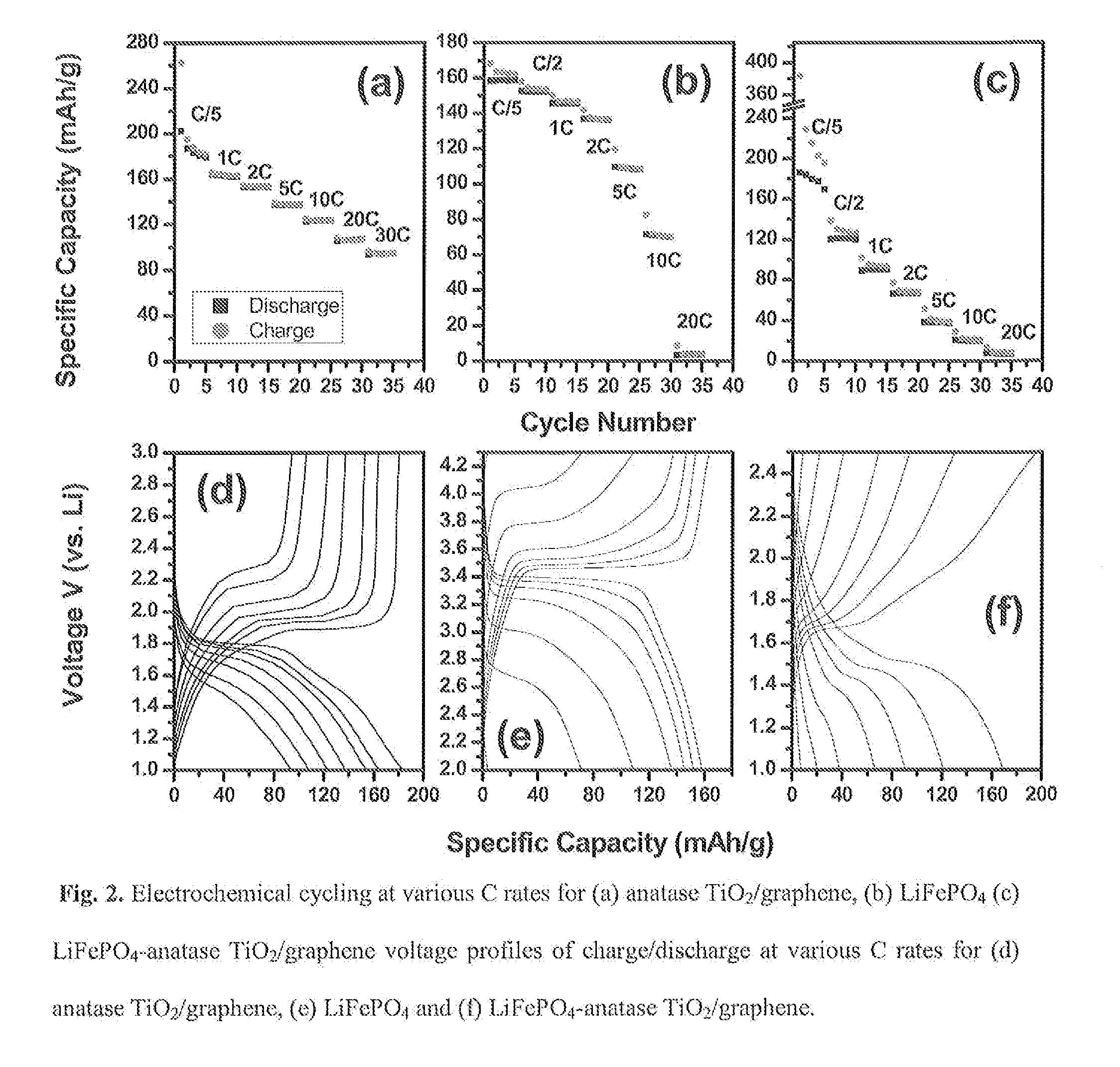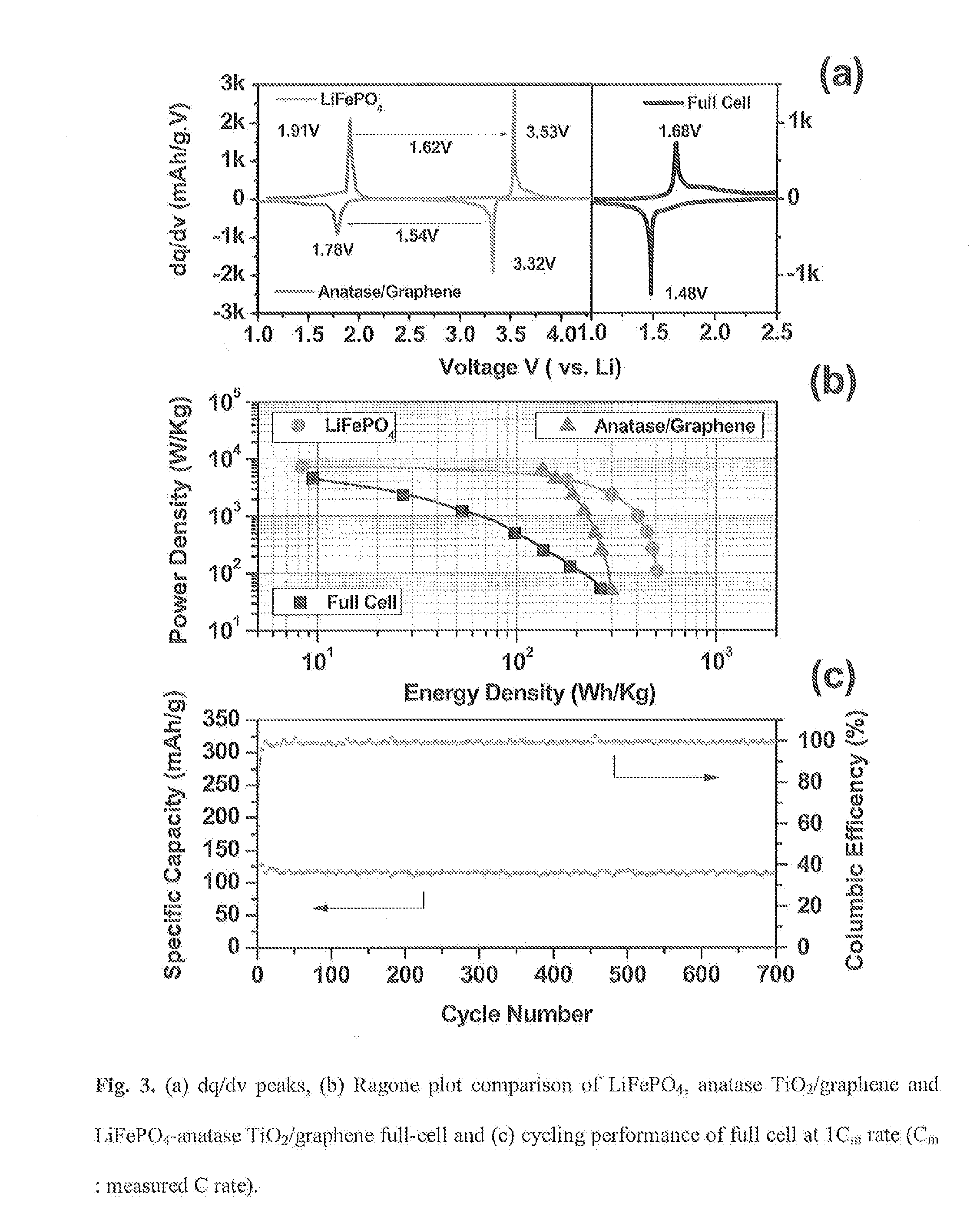GRAPHENE/LiFePO4 CATHODE WITH ENHANCED STABILITY
a graphene/lifepo4 cathode and enhanced stability technology, applied in the direction of cell components, basic electric elements, electrochemical generators, etc., can solve the problems of long life cycle required in practical commercial applications, failure to produce a cathode material that maintains a high specific capacity, and failure to achieve structural stability, structural stability, and structural stability. , the effect of sufficien
- Summary
- Abstract
- Description
- Claims
- Application Information
AI Technical Summary
Benefits of technology
Problems solved by technology
Method used
Image
Examples
Embodiment Construction
[0021]For the purposes of promoting an understanding of the principles of the invention, reference will now be made to the embodiments illustrated in the drawings and specific language will be used to describe the same. It will nevertheless be understood that no limitations of the inventive scope is thereby intended, as the scope of this invention should be evaluated with reference to the claims appended hereto. Alterations and further modifications in the illustrated devices, and such further applications of the principles of the invention as illustrated herein are contemplated as would normally occur to one skilled in the art to which the invention relates.
[0022]A series of experiments where conducted to demonstrate one embodiment of the present invention. Briefly, in these experiments, Li-ion batteries made from a LiFePO4 cathode and an anatase TiO2 / graphene composite anode were investigated for potential applications in stationary energy storage. Fine-structured LiFePO4 was synt...
PUM
| Property | Measurement | Unit |
|---|---|---|
| total volume | aaaaa | aaaaa |
| crystallite size | aaaaa | aaaaa |
| particle size | aaaaa | aaaaa |
Abstract
Description
Claims
Application Information
 Login to View More
Login to View More - R&D
- Intellectual Property
- Life Sciences
- Materials
- Tech Scout
- Unparalleled Data Quality
- Higher Quality Content
- 60% Fewer Hallucinations
Browse by: Latest US Patents, China's latest patents, Technical Efficacy Thesaurus, Application Domain, Technology Topic, Popular Technical Reports.
© 2025 PatSnap. All rights reserved.Legal|Privacy policy|Modern Slavery Act Transparency Statement|Sitemap|About US| Contact US: help@patsnap.com



